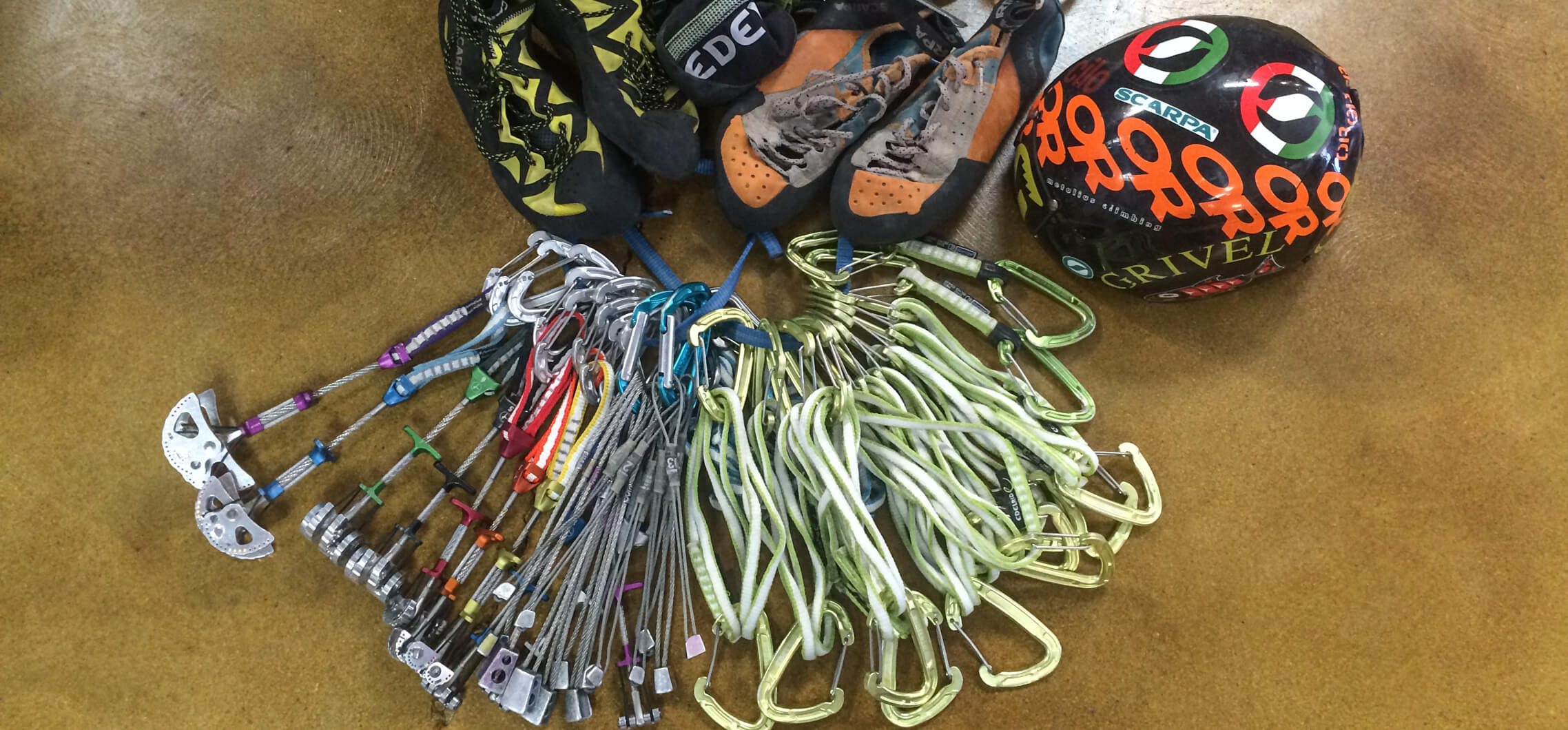Free shipping! Get free ground shipping on orders over $99 to the lower 48 states. Enter code FREE99
at checkout.


Photo:
To many new climbers, alpine and trad climbing are the dark arts of the vertical world. Everything about route finding and placing one’s own gear seems intimidating. Hell, even putting together your first rack can be tricky. But SCARPA athlete Shingo Ohkawa is here to help…with the gear part anyway. He specializes in new routing, especially if there’s unusual, creative, or as some might call, slightly odd terrain to sort out. Here’s his suggestion for dialing in your first trad setup.
Harness - Route development, at times, can be more like construction work. For blue-collar climbing and maximum utility, I rock my Metolius Safe Tech Comp harness. When I can look forward to long days in the mountains, my Edelrid Wing is big comfort packed in a tiny package.
Rock Shoes - The cruxes of most granite lines that captivate me often present a vacuum of holds. On those harder pitches where I’m forced to make the most with only the smallest features, I need my rock shoes to be more like a scalpel. I pull on the Vapor Lace, my go-to lace-up for techy routes requiring move after move of precise, micro footwork. And until May 13, 2016, you could sign up to win a pair of these new rock shoes through the SCARPA x Petzl Spring Update Sweepstakes.
Approach Shoes - The search for new terrain almost always involves a bit of high-alpine 3rd classing or some obligatory soloing above mortal consequences, often with a pack on! My favorite climbing approach shoes, the Gecko Lite, allow me too confidently—and quickly—move vertically and horizontally through those environments without slow transitions between climbing and mountain footwear.
Rope - Edelrid is my rope brand of choice. Two models specifically, the Edelrid Swift 8.9 and Eagle Light 9.5, my go-to for all my alpine rock climbing needs. The Swift is a big rope in a skinny package for long routes and moving fast. And the Eagle Light is my daily driver. I trust it for all the obscure, weird, and “thrutchy” exploratory climbing I get into!
Helmet - For expeditions and for alpine and trad climbing, I prefer the sturdy, abs-plastic shell of my Grivel Salamander. In these environments, I expect to have to avoid falling ice and stone and a burlier helmet holds up to minor impacts a bit better. For ultra-light missions, I wear my polystyrene Edelrid Shield Lite. I love its minimalist suspension and superb fit.
Starter Rack - I believe a climber’s rack is like a fingerprint. Depending on where you climb and how you prefer to protect climbs, everyone’s is going to be a little different. I think that the best gear is the gear with which a climber gets most comfortable and can place soundly and quickly. This is my starter rack for trad climbing on granite in areas like Joshua Tree, City of Rocks, Yosemite, and my home area, Little Cottonwood Canyon in Utah. Metolius U.L.
Curve Nut 1-8 and DMM Peenut 1-5 - On the small end, I dig these offsets for wonky, irregular cracks or
for areas with a history of piton use. On my typical free-rack, I carry doubles in the first three sizes.
Metolius U.L. Master Cam 00-8 - I think for a single set would suffice to begin with and 00-8 covers tips to wide hands. On my typical free-rack, when I’m opening new routes, I will carry doubles of 1-6 from fingers to hands.
For the bigger end, I love the Super Cam extended-range units. For most, a 4/5 Camalot is a better choice, but for the climbing I do—when
there’s no telling whether a big piece will be necessary—they’re ideal.
Edelrid Mission Biners - I want the lightest, biggest carabiners I can get. The Mission allows me to carry heaps of hardware and slings for my adventures!
Featured Product

